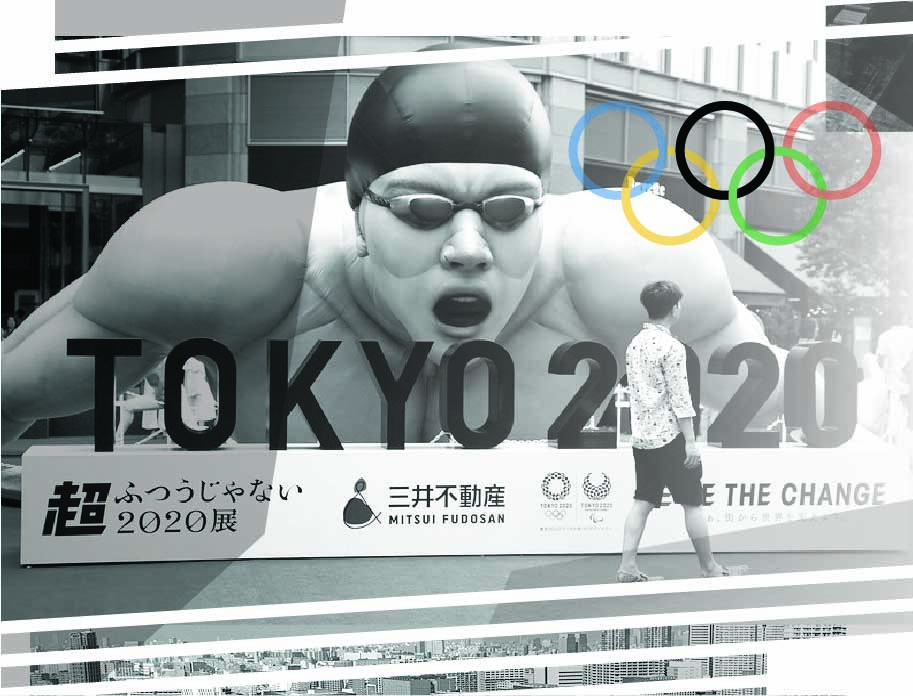
Monica Nelson
Monica Nelson is a PhD student in Te Huataki Waiora School of Health, University of Waikato, Aotearoa New Zealand. Her interests are focused around the negotiation of gender and strength in the context of strength sports.
Twitter: @mcmoniker

Prof Holly Thorpe
Professor of Sociology of Sport in Te Huataki Waiora School of Health, University of Waikato, Aotearoa New Zealand. Her areas of expertise include gender, action sports, youth culture and female athlete health.
Twitter: @hollythorpe_nz

Shannon Scovel
Shannon Scovel is a PhD student in the Philip Merrill College of Journalism at the University of Maryland. Her interests include the representation of women in sports media and athlete branding.
Twitter: @ShannonScovel

Section 3: Performance & Identity
- ‘The Games they are a-changin’’: footnotes on Olympic athletics in transition post-Tokyo 2020
- Racist slurs, stubborn animals, and colonial fear
- Tokyo 2021 and the LGBTQ athlete
- Naomi Osaka bearing the torch for a mixed race Japan
- Tokyo 2020: athlete welfare and coping with new anxieties
- Bodies of change: Women’s artistic gymnastics in Tokyo 2021
- When women aren’t women enough to compete
- Policing the uniforms and sportswear of Tokyo 2020: Commercialism in the name of competition
- Twitter helps normalize discussions on mental health beyond athletes
- Communication of athlete risk with head injuries in the 2020 Olympics
- The media coverage of the Tokyo 2021 Paralympic Games: Visibility, progress and politics
- Companies escape attention as debate on women’s uniform rages
- It’s complicated: Disability media and the Paralympic Games
- Tokyo Olympics: When athletes are faced with the impossible
Under the bright lights of the Olympic Weightlifting venue in Tokyo, Aotearoa New Zealander Laurel Hubbard stepped up onto the platform to take her first lifts as an Olympian. Regardless of the amount of weight that she lifted, Hubbard had already made an important mark on history as the first out transgender athlete to compete in an individual sport at the Olympic Games. And as we demonstrate in this article, the disproportionate media and public response to her inclusion are representative of how highly contested challenges to the gender binary in elite sport continue to be.
The announcement: the beginnings of a polarized media furore
On June 21, 2021, the New Zealand Olympic Committee (NZOC) announced their Olympic Weightlifting team, including Laurel Hubbard in the +87kg women’s category. NZOC CEO Kereyn Smith congratulated all of the athletes, declaring that the team was “committed to a strong culture of manaaki, inclusion and respect for all”. The news quickly travelled around the world, with close to 400 written media sources within 24 hours of the announcement. Yet many such media reports did not follow the NZOC’s lead in treating the topic, and Hubbard, with respect. An early analysis of articles written on the day of Hubbard’s Olympic inclusion showed roughly 30% deliberately used her pre-transition name. Many of the same stories emphasized aspects of her pre-transition life and sporting achievements, and carried alarmist and ‘click bait’ headlines, such as “Disaster for women’s sport”.
Presented in highly emotive and polarized terms, the topic continued to be hotly debated across television, radio, newspapers and social media. Anti-inclusion accounts often ignored that Hubbard had fairly qualified through processes outlined by the International Weightlifting Federation and the International Olympic Committee (IOC), centralized testosterone during puberty as an ‘unfair advantage’, or framed the discussion in terms of ‘fairness versus inclusion’ as if the two concepts were mutually exclusive. Anti-trans groups around the world rallied to control the discussion in online chats, wrote to the Minister of Sport in New Zealand demanding that he intervene, submitted petitions, and even protested outside the New Zealand High Commission in London against Hubbard’s inclusion in the weightlifting team. During this time, transgender health experts noted negative impacts on the transgender community.
Some pointed out a number of inconsistencies in how the IOC and the media were responding to Hubbard. Importantly, Hubbard was not the only or the first transgender athlete to compete in the Olympic Games. Quinn, a Canadian football player, later became the first out transgender athlete to win a gold medal but received much less media coverage (161 articles). Others highlighted incongruities in IOC regulations that allowed Hubbard to compete but excluded cis-gendered women with naturally-occurring high testosterone levels, such as Namibian 400-meter athletes Christine Mboma and Beatrice Masilingi. As various commentators have clearly pointed out, Black and Brown sports women’s bodies are unfairly policed and regulated by such policies. Despite these important issues, Hubbard’s inclusion and impending performance at the Games continued to receive a disproportionate amount of media coverage.
The event: surprising allies and a moment of learning
In the days leading up to Hubbard’s event the IOC firmly and consistently expressed their support for her inclusion; both the IOC President Thomas Bach and IOC Medical & Scientific Director Dr. Richard Budgett released media statements addressing accusations of unfairness and biological advantage. The NZOC reiterated their ongoing support and detailed their efforts to protect Hubbard from cyber-bullying.
Despite the IOC and LGBTQI+ organizations producing new media guides to teach reporters how to respectfully write about LGBTQI+ athletes, polarizing media coverage continued on the day of Hubbard’s competition. Although Hubbard did not complete any of her lifts, the event prompted a significant media response with 1331 print media articles within 24 hours of the event. Whereas some media responded with criticism and critique, others showed support for her commitment, courage and humanity. In so doing, the event prompted some media and audiences to learn more about transgender athletes and the challenges facing the LGBTQI+ community in sport and society more broadly.
Adding to this moment of learning was Hubbard’s own voice. Uninterested in fame and seeking to steer clear of controversy to focus on her athletic performance, Hubbard historically avoided media attention. Yet in a small press conference the day after the competition, she quietly articulated her thoughts and reflections on the experience and her hopes for the future. “As we move into a new and more understanding world, people are starting to realize that people like me are just people… All I have ever wanted as an athlete, is to be regarded as an athlete.”
While the future of transgender participation in the Olympics is uncertain, the participation of LGBTQI+ athletes at the Tokyo Olympic Games will surely be an important stepping stone as sports organizations, media, athletes and the public continue to discuss and debate this important social issue. While the IOC proclaims sport as a human right and continually located Hubbard’s participation within that rhetoric, there is much work still to be done. The challenge for future Olympic Games is to determine how to revise the structures, rules and regulations of sport to recognize gender diversity, to move beyond the gender binary, and to fully support and protect non-binary and transgender athletes. As demonstrated in this article, media representation will play an important role in educating audiences and building towards more gender-inclusive sporting futures.

